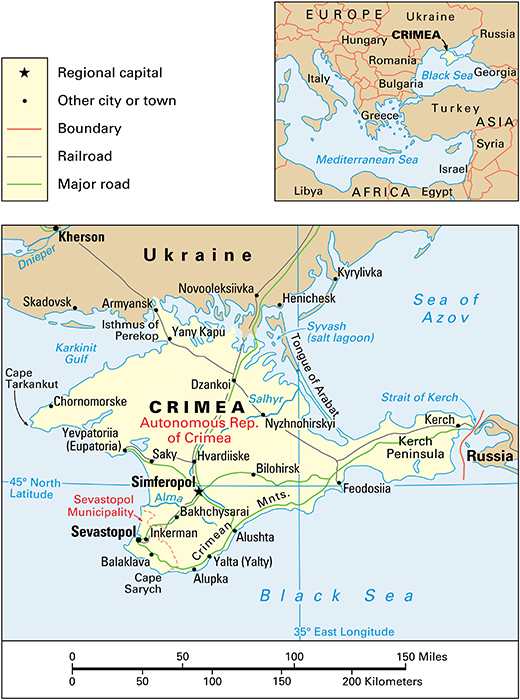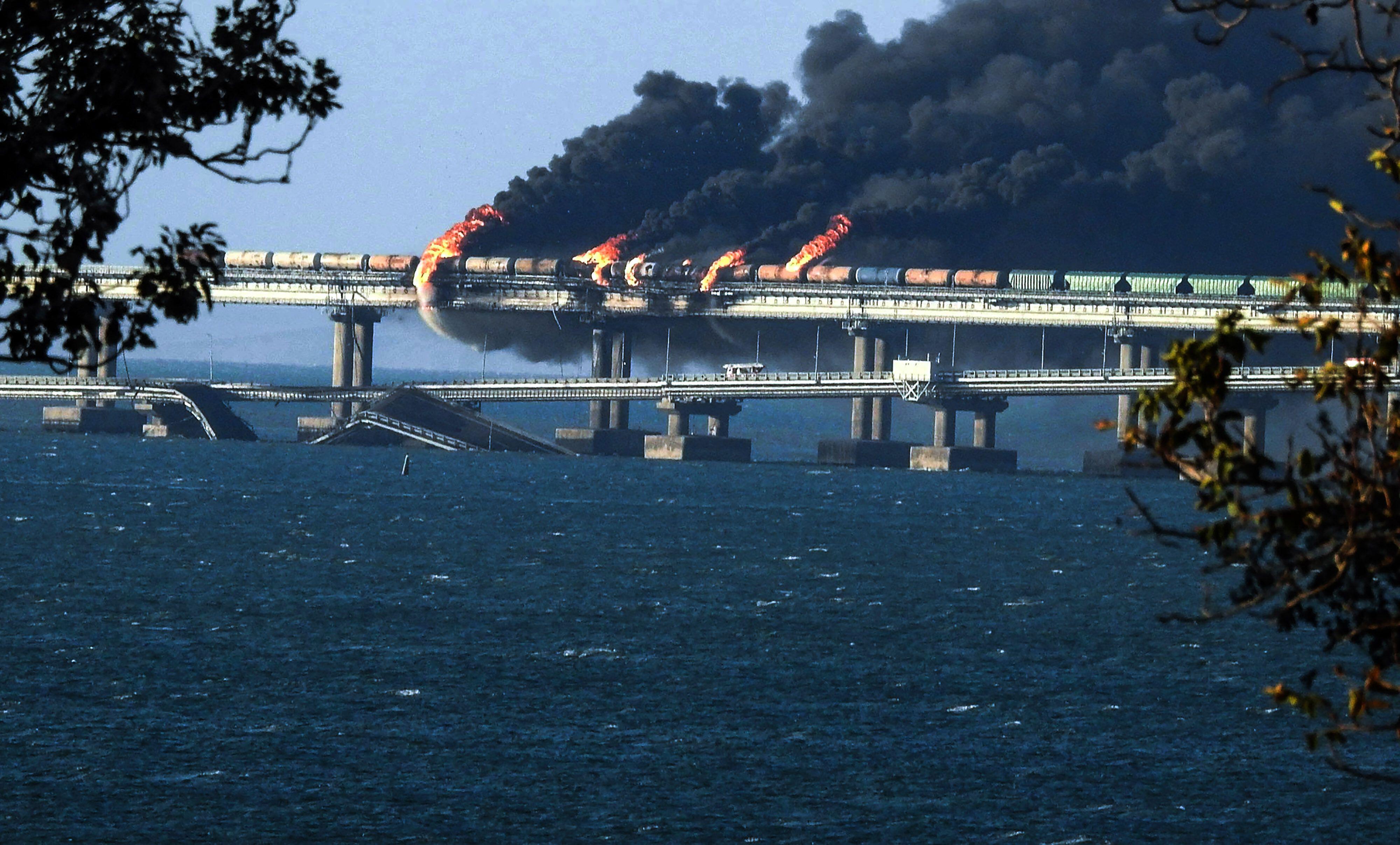Crimea << kry MEE uh >> is a peninsula that juts from the southern part of Ukraine into the Black Sea and the Sea of Azov. It covers about 10,400 square miles (27,000 square kilometers) and is joined to the mainland by the narrow Isthmus of Perekop. The population of Crimea is 1,967,259. The capital is Simferopol. Other cities include Kerch, Sevastopol, historically important Balaklava, and Yalta. Yalta served as the scene of a historic conference of Allied leaders during World War II (1939-1945).

Crimea rises gradually from coastal plains to the low Crimean Mountains along the southern coast. The grassy plains furnish pasture for sheep and horses. Grapes from the vineyards are used to produce wine. Grains flourish in the northern lowlands of the peninsula. Important deposits of iron, marble, and limestone have been found in Crimea, and salt is dried along the coasts. The chief industries are shipbuilding, mining, and fishing. Resorts and health centers line the coasts.
Crimea was one of the strongholds of opposition to the Communist government after the Russian Revolution of 1917. In 1921, Crimea became an autonomous republic within the Russian republic of the Soviet Union.
During World War II, German troops occupied the peninsula from 1941 to 1944. In 1944, Soviet authorities forcibly deported about 250,000 Turkic-speaking people called Tatars from Crimea to Siberia and Central Asia. The Crimean Tatars were falsely accused of collaborating with the Germans. In 1967, these charges were dropped, but the Tatars were prevented from returning to Crimea in large numbers. Crimea’s autonomous status was removed in 1945, and it became a province of Russia. In 1954, the Soviet Union made Crimea part of the Soviet republic of Ukraine. In 1991, following an upheaval in the Soviet Union, Ukraine declared itself an independent nation. It became part of the Commonwealth of Independent States, a loose association of former Soviet republics. Crimea functioned as a self-governing republic within Ukraine. In 1992, Russia declared the 1954 decision to give Crimea to Ukraine unconstitutional. However, Ukraine opposed this declaration.
In early March 2014, Russian forces secured control of Crimea. Later that month, people on the peninsula voted to declare independence from Ukraine. The government of Ukraine, and many of its allies, called the vote illegal. Days later, Russia annexed (assumed control of) the peninsula. Russia made substantial investments in the region and promoted it as a tourist destination. In 2019, workers completed a 12-mile (19-kilometer) road and rail bridge connecting the peninsula to southern Russia.
In 2022, Russia invaded Ukraine. It used Crimea as a base for attacking other regions and cities in southern Ukraine. One of Russia’s major strategic goals was to gain control of a land corridor linking Crimea and Russia. 
